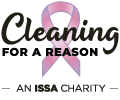ISSAlert February 12, 2019
On February 11, ISSA submitted comments in response to the Colorado Department of Public Health and Environment, Air Pollution Control Division’s request for public input on the potential adoption of volatile organic compound (VOC) limits for consumer products manufactured or sold in the state.
Colorado is considering moving from the national U.S. Environmental Protection Agency’s (EPA) standards for consumer products to Phase 4 of the Ozone Transport Commission (OTC) regulations, because Colorado’s Denver Metro North Front Range is not meeting the federal air quality standards for ozone.
In its comments, ISSA recommends Colorado take the following actions:
- Adopt Phase 2 of OTC’s standards for consumer products rather than Phase 4 right away.
- Allow for a reasonable amount of time to comply and keep the limits limited to the ozone nonattainment area rather than the whole state.
- Wait until Phase 2 is implemented before deciding whether more stringent VOC limits are needed.
ISSA goes on to write, “This would be the most appropriate and measured approach to reducing VOCs for Colorado, industry, and the public. As opposed to going directly to Phase 4 right now, this approach would allow formulators the opportunity to adapt their chemical formulations, give cleaning providers time to choose the most effective and affordable cleaning products for their specific needs, and give distributors a better idea of what cleaning products will sell through after they are reformulated.”
To view ISSA’s comments in their entirety, please click here.
As a benefit to our members, ISSA will continue to monitor and comment on these issues as they come up in the various states. For additional information, or questions regarding VOCs, other issues, or ISSA’s advocacy efforts please contact ISSA Director of Government Affairs John Nothdurft.
Background: The EPA and several state governments regulate the content of VOCs in consumer, institutional, and industrial products including various cleaning products. VOC regulation is becoming more and more prevalent due to an increased understanding of how VOCs photochemically react to form ozone in the lower atmosphere and a heightened recognition that ozone is a health hazard particularly with regards to children and the elderly. The chart linked here provides you with a wealth of information on how VOCs are regulated across the United States and the differences between the various OTC standards.





